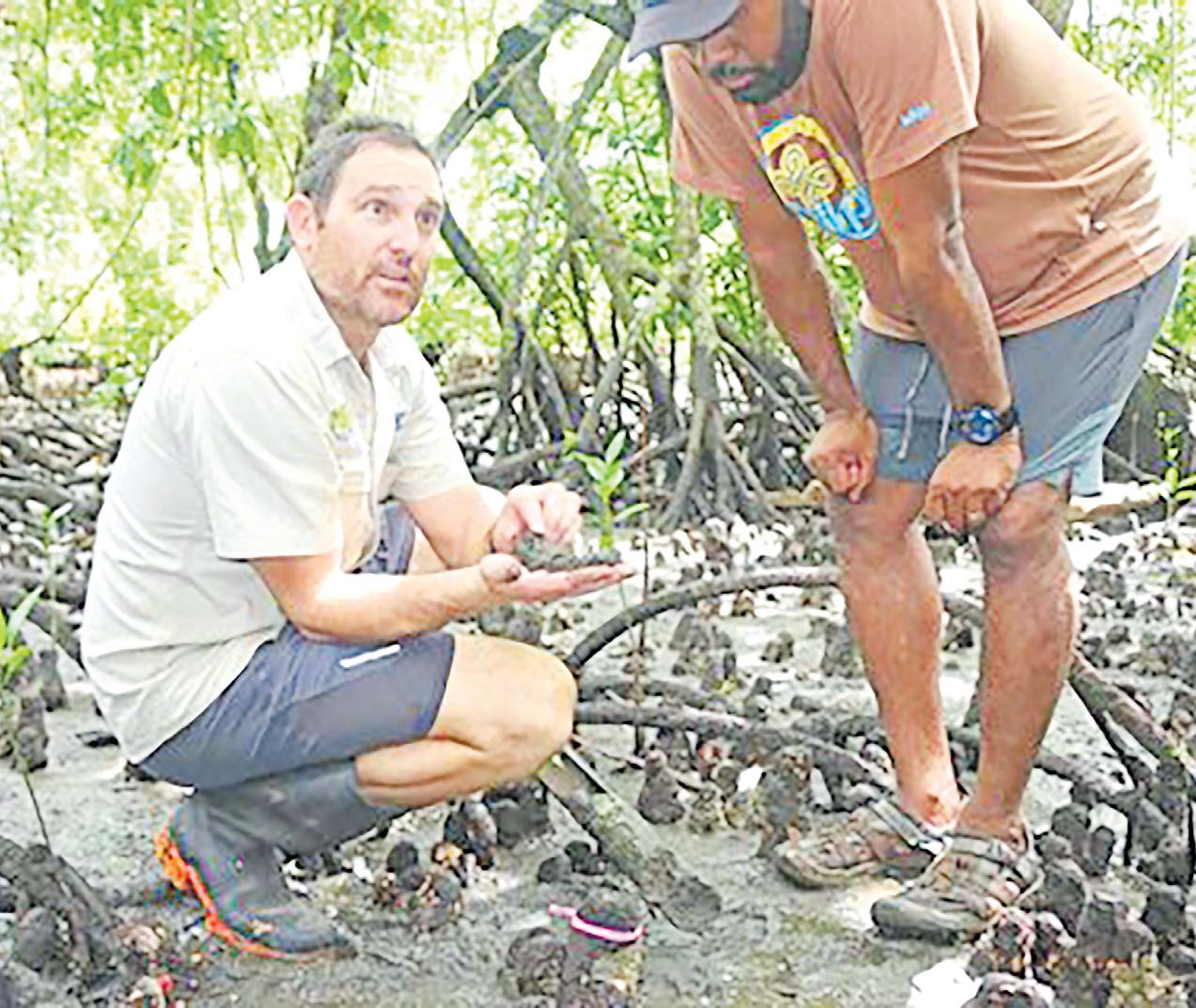MANGROVES in Fiji represent an important coastal ecosystem.
They provide critical multi benefits to coastal communities, as they protect shorelines from sea-level rise and extreme storm surges their intricate root systems also supports an array of diverse marine wildlife.
Here in Fiji, they are most important because they are well-established sources of livelihood for many coastal communities.
Lesser known is their role in climate change. Mangroves are among the most carbon-rich ecosystems on Earth, capable of storing up to 10 times more carbon than tropical forests.
These high-value coastal ecosystems — mangroves, seagrasses and salt marshes — are collectively known as “blue carbon ecosystem”.
They have a significant role to play in mitigating climate change and when degraded or destroyed, the carbon that they store is released into the atmosphere.
Worldwide, the main threats to these ecosystems include rapid population growth, intensive agricultural practices, and unsustainable infrastructure development that accumulatively has led to significant loss and degradation of mangrove areas.
In recognition of the need to conserve, protect and improve management practices of blue carbon ecosystems globally,
Conservation International is working closely with the International Partnership for Blue Carbon, the Blue Carbon Initiative, and the Global Mangrove Alliance.
Fiji’s blue carbon
As Fiji takes the global stage and commits to international climate change goals, the urgency to protect and conserve our vulnerable blue carbon ecosystems has never been greater. Over the past five years, Conservation International has been heavily involved in raising awareness about blue carbon in Fiji. We have convened exploratory discussions with key decision-makers on what a blue carbon policy framework for Fiji would look like. We have assessed the carbon content in major mangrove stands on Viti Levu representing some first and only research on mangrove soil carbon for Fiji and the region, so far. We have also investigated community perceptions to better understand how coastal communities relate to mangrove resources. With funding support from the Flora Family Foundation in 2018, Conservation International Fiji began efforts to develop a roadmap for blue carbon in Fiji. The efforts detailed priority actions as well as the role and responsibilities of the government, private and public stakeholders. These activities included data assessments, national policy assessments, climate policy assessments, private, public and community outreach. In 2019-2020, Conservation International became a grantee of the Australian Department of Foreign Affairs and Trade (DFAT) fund to further scientific investigations in the blue carbon space of work in Fiji. One of the major highlights of this component of the project was the preliminary quantitative findings in the variations of carbon community structures among Fiji’s largest mangrove stands, in the Rewa delta and Ba delta, respectively located at the extreme ends of the wet and dry side of Viti Levu. Using open-source mapping tools, the team was able to deduce the mangrove area to be 65,243 hectares. The country-specific findings and outcomes from this project are milestone achievements for national mitigation efforts aimed at reducing carbon emissions and the impacts of climate change in Fiji.
Carbon credits
Globally, Conservation International has demonstrated the viability of carbon credits in other geographies. While the recent blue carbon studies mentioned are among the first baseline survey of in-depth soil carbon content within Fiji’s mangrove ecosystems, they most certainly are not the last given the ongoing interests in blue carbon by the growing international carbon
credit market. As such, the project also ventured into identifying viable blue carbon project sites within Fiji’s
coastal ecosystem with the goal of developing sustainably financed blue carbon conservation and/or restoration projects in Fiji.
It should be noted, that creating this financial mechanism takes signifi cant time, stakeholder engagement and commitment, as
well as a financial investment. Should a carbon credit program ever be achieved, the benefits to Fiji and our people would be significant. In order to make the venture viable, threats such as infrastructure and coastal development, unsustainable tourism and agriculture, as well as industrial waste would need to be mitigated. Hence, the proper monitoring and control of such threats and risk to blue carbon ecosystems are critical. In retrospect, it is time to start considering the value of our environment by building a resilient future for ourselves and our community — A future that is only possible when everyone values and cares for nature. Conservation International Fiji is now working to secure further grants to build knowledge and better inform blue carbon efforts within Fiji’s coastal ecosystems.
- SENILOLIA TUIWAWA is Conservation International Fiji’s mangrove systems specialist. The views expressed in this article do not necessarily reflect the views of this newspaper.




